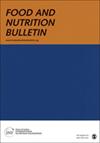粮食不安全状况及2019冠状病毒病对斯里兰卡农村生计的影响
IF 1.8
4区 医学
Q3 FOOD SCIENCE & TECHNOLOGY
引用次数: 0
摘要
背景关于新冠肺炎大流行如何影响斯里兰卡的粮食安全和生计,我们知之甚少。目的本文旨在评估斯里兰卡农村农业家庭的粮食不安全、新冠肺炎的感知影响和应对机制。使用家庭问卷评估粮食不安全(30天召回)、新冠肺炎的感知影响(6个月召回)和应对机制(6个月中召回)。为了评估粮食不安全,我们使用了8项粮食不安全经验量表。我们测试了T1(基线:2020年12月至2021年2月)和T2(随访:2021年7月至9月)之间的差异,并使用逻辑回归模型探讨了粮食不安全与新冠肺炎对收入的感知影响之间的关联。结果食物不安全感非常普遍(T1:75%,T2:80%),但各地区不同。大多数受访者受到新冠肺炎和/或新冠肺炎相关缓解措施的影响(T1:84%,T2:89%)。在受影响的家庭中,通常报告的影响包括对收入(T1:77%,T2:76%)、食品成本(T1:84%,T2:83%)和旅行(两轮均为~90%)的影响。农业活动也受到不利影响(T1:64%,T2:69%)。约有一半受新冠肺炎影响的家庭报告称,出售牲畜或资产以满足基本需求。收入受到新冠肺炎影响的家庭更有可能粮食不安全(调整后的比值比:2.56,P<.001)。结论斯里兰卡农村家庭在新冠肺炎大流行期间经历了粮食不安全和生计混乱。需要进行额外的调查,以评估COVID-19后的恢复情况,并了解支持生计的计划是否具有保护性。本文章由计算机程序翻译,如有差异,请以英文原文为准。
Food Insecurity and Perceived Effects of COVID-19 on Livelihoods in Rural Sri Lanka.
BACKGROUND
Little is known about how the COVID-19 pandemic has affected food security and livelihoods in Sri Lanka.
OBJECTIVE
This article aims to assess food insecurity, perceived effects of COVID-19, and coping mechanisms among agriculture-based households in rural Sri Lanka.
METHODS
We used 2 rounds of panel data from phone surveys (n = 1057 households) conducted in 5 districts. Food insecurity (30-day recall), perceived impacts of COVID-19 (6-month recall), and coping mechanisms (6-month recall) were assessed using a household questionnaire. To assess food insecurity, we used the 8-item Food Insecurity Experience Scale. We tested for differences between T1 (baseline: December 2020-February 2021) and T2 (follow-up: July 2021-September 2021) and explored the association between food insecurity and the perceived effect of COVID-19 on income using a logistic regression model.
RESULTS
Food insecurity was highly prevalent (T1: 75%, T2: 80%) but varied across districts. Most respondents were affected by COVID-19 and/or COVID-19-associated mitigation measures (T1: 84%, T2: 89%). Among affected households, commonly reported impacts included those on income (T1: 77%, T2: 76%), food costs (T1: 84%, T2: 83%), and travel (∼90% in both rounds). Agricultural activities were also adversely affected (T1: 64%, T2: 69%). About half of COVID-19-affected households reported selling livestock or assets to meet basic needs. Households whose income was impacted by COVID-19 were more likely to be food insecure (adjusted odds ratio: 2.56, P < .001).
CONCLUSIONS
Households in rural Sri Lanka experienced food insecurity and livelihood disturbances during the COVID-19 pandemic. Additional surveys are needed to assess recovery post-COVID-19 and to understand if programs that support livelihoods have been protective.
求助全文
通过发布文献求助,成功后即可免费获取论文全文。
去求助
来源期刊

Food and Nutrition Bulletin
工程技术-食品科技
CiteScore
4.10
自引率
0.00%
发文量
31
审稿时长
18-36 weeks
期刊介绍:
The Food and Nutrition Bulletin (FNB,) is a peer-reviewed, academic journal published quarterly by the Nevin Scrimshaw International Nutrition Foundation. The Journal is one of the leading resources used by researchers, academics, nutrition policy makers and planners in over 125 countries to obtain the most current research and policy information related to nutrition in developing countries.
 求助内容:
求助内容: 应助结果提醒方式:
应助结果提醒方式:


